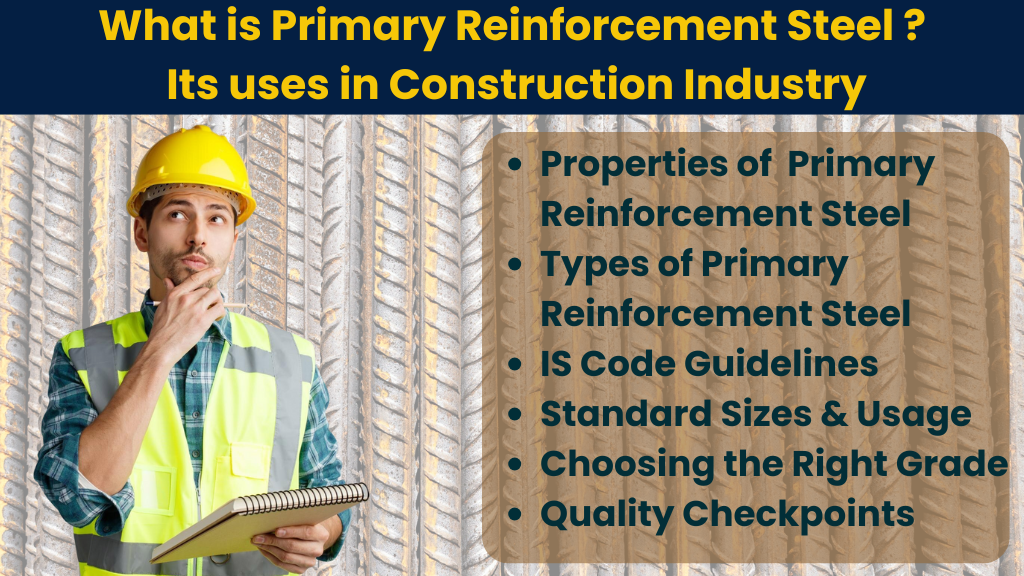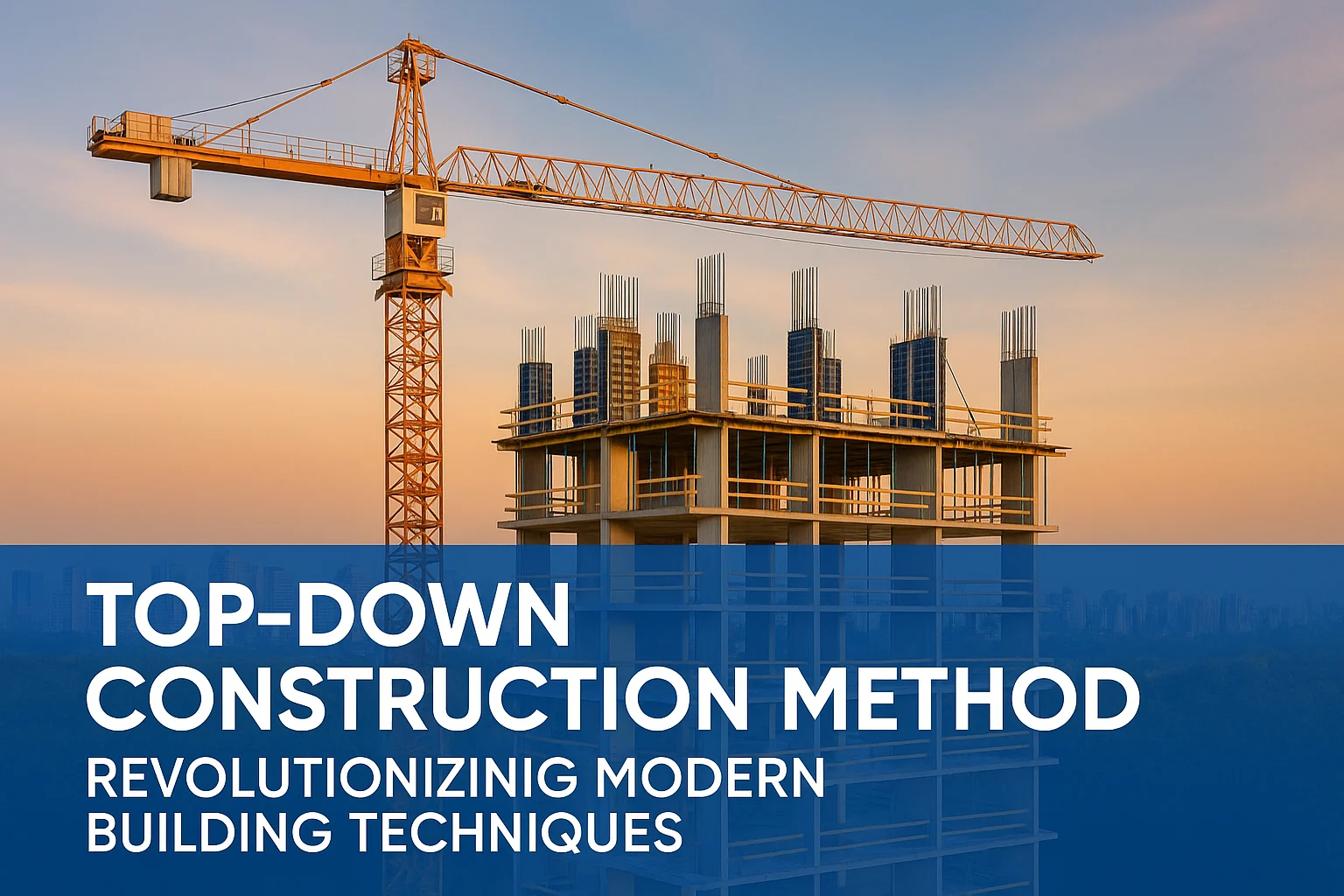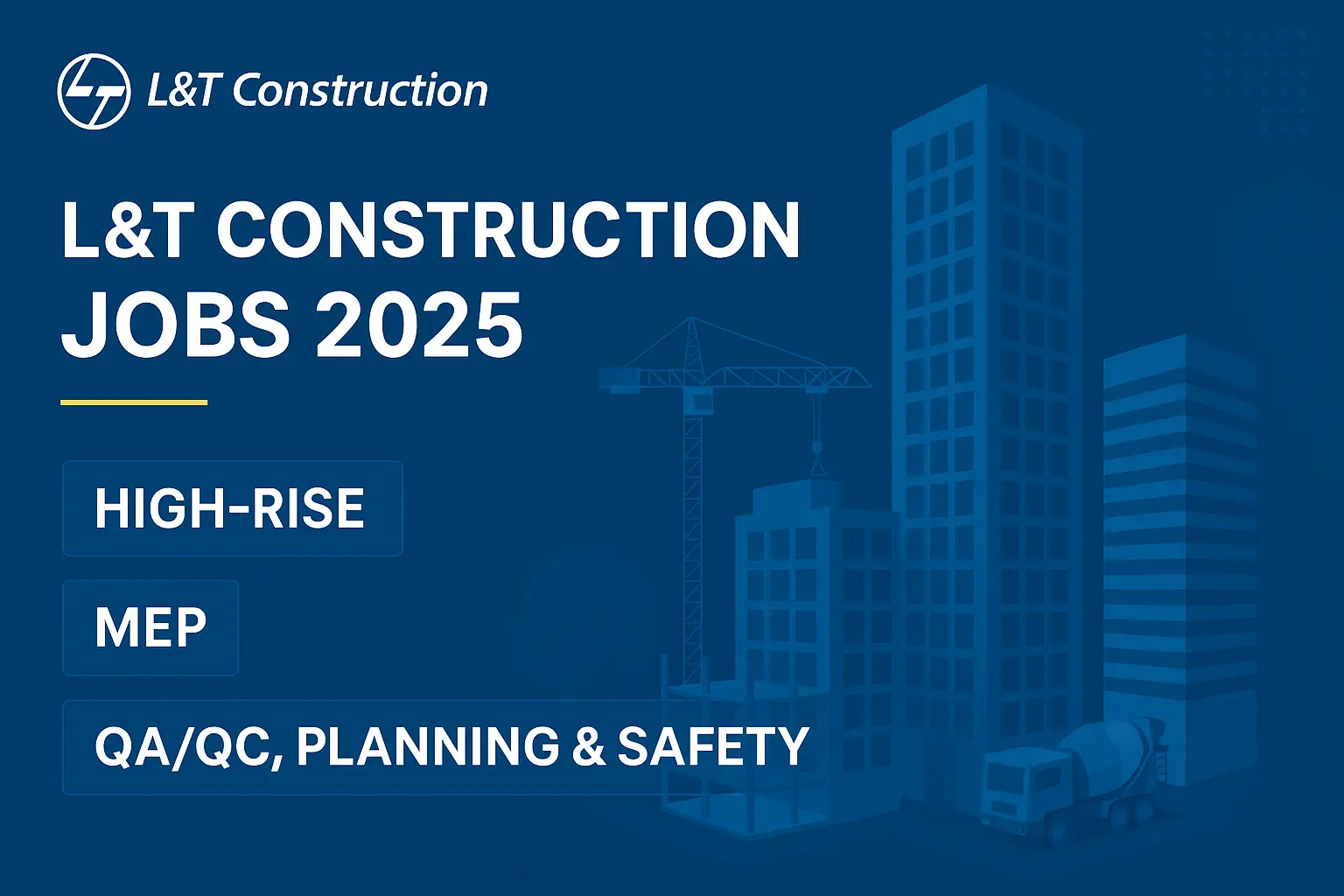Primary Reinforcement Steel : In today’s construction industry, reinforced concrete plays a key role in building strong and durable structures. Whether it’s a residential apartment, a commercial building, or a bridge, reinforcement steel is the main object that supports the concrete.
Concrete is a compression member but it cannot handle tension. That’s why we add steel bars—called reinforcement steel—to concrete. These bars provide the strength required to handle tensile and bending forces.
This article covers everything you need to know about primary reinforcement steel used in construction—what it is, its types, properties (including chemical), standards, sizes, and practical FAQs.
What Is Primary Reinforcement Steel?
In structural design, primary reinforcement steel refers to the main reinforcement bars that resist the direct structural loads. These bars are placed in beams, slabs, columns, and foundations, where tension and shear forces act.
They are called “primary” because they carry the bulk of the load, helping the concrete member to perform as intended over its lifespan.
Don’t Confuse: Primary Steel vs Primary Reinforcement
It’s important to clear the confusion between:
- Primary Steel (by source): Steel made from iron ore using Basic Oxygen Furnace (BOF)
- Secondary Steel (by source): Steel made by recycling scrap using Electric Arc Furnace (EAF)
- Primary Reinforcement Steel (by function): Steel bars placed in concrete to carry structural loads
In construction, we are concerned more about function than origin. Whether the steel is primary or secondary in origin, it can be used as reinforcement if it meets quality standards.
Why Primary Reinforcement Steel Is Critical
Reinforcement steel usually provides the tensile strength which is not present in concrete. Without it, buildings would crack or collapse under load. Primary reinforcement:
- Resists tensile and bending forces
- Maintains the shape and integrity of concrete members
- Ensures safety against seismic, wind, and load conditions
Improves long-term durability.
Mechanical & Chemical Properties of Reinforcement Steel
To perform well in construction, reinforcement steel must meet certain mechanical and chemical properties.
Mechanical Properties (as per IS 1786)
| Property | Fe 415 | Fe 500 | Fe 500D | Fe 550 |
| Yield Strength (MPa) | ≥ 415 | ≥ 500 | ≥ 500 | ≥ 550 |
| Ultimate Tensile Strength (MPa) | ≥ 485 | ≥ 545 | ≥ 565 | ≥ 585 |
| Elongation (%) | ≥ 14.5 | ≥ 12 | ≥ 16 | ≥ 10 |
| Bendability | Excellent | Excellent | Excellent | Good |
Chemical Properties (as per IS 1786)
| Element | Fe 500 Max (%) | Fe 500D Max (%) | Purpose |
| Carbon (C) | 0.30 | 0.25 | Lower carbon increases ductility |
| Sulphur (S) | 0.055 | 0.040 | Lower sulphur improves weldability |
| Phosphorus (P) | 0.055 | 0.040 | Lower P reduces brittleness |
| S+P Combined | 0.105 | 0.075 | Total impurity content |
Effects of reduced levels of Carbon, Sulphur, and Phosphorus in steel are as follows:
- More ductile (easy to bend without breaking)
- Better in seismic zones
- Safer during welding and fabrication
Common Types of Primary Reinforcement Bars
1. Mild Steel Bars (Fe 250)
- Smooth surface
- Used in low-load structures
- Weak bond with concrete
2. Deformed Bars (HYSD – Fe 415/500/550)
- Ribs on surface for better grip
- Stronger than mild steel
- Widely used in structural work
3. TMT Bars (Thermo-Mechanically Treated)
- Most used in India
- Excellent corrosion resistance
- Strong and flexible—ideal for earthquake zones
- Available in Fe 500, Fe 500D, Fe 550, Fe 600 grades
IS Code Standards
In India, steel used for reinforcement must follow:
- IS 1786: For high strength deformed bars (Fe 415 to Fe 600)
- IS 432 (Part-1): Mild steel plain bars
- IS 13920: Ductile detailing for earthquake-resistant structures
Always look for the ISI mark and manufacturer’s test certificate when buying steel.
Standard Sizes and Usage in Construction
| Diameter (mm) | Typical Use |
| 8 mm | Slab distribution bars, stirrups |
| 10–12 mm | Slab main bars, footings, small beams |
| 16 mm | Columns, beams |
| 20–25 mm | Heavy columns, footings, large beams |
| 32 mm+ | Bridges, industrial structures |
Standard length of bars: 12 meters
Bars can be cut and bent as per Bar Bending Schedule (BBS).
Placement of Reinforcement at Site
- Cutting & Bending: Done as per drawing and BBS
- Binding: Bars are tied with wire to hold position
- Cover Blocks: Used to maintain proper cover (20–50 mm)
- Lap Lengths: Overlaps between bars to continue reinforcement (usually 50× bar dia)
- Anchorage: Bent or hooked ends to grip concrete properly
Proper placement ensures structural safety and load transfer.
Quality Checklist
Before using steel, always check:
- ISI certification on bars
- Surface should be rust-free and clean
- Diameter as per standard
- Test certificate from supplier
- Uniform rib pattern for bonding
Conclusion
Primary reinforcement steel is the key element of structural safety. Whether made from iron ore or scrap, what matters is the quality, grade, and compliance with IS standards. From tensile strength to chemical composition, every property plays a vital role in how the structure performs over time.
Always choose IS-certified TMT bars from trusted brands. Consult your structural engineer and ensure bars are properly tested and placed on site.
Investing in quality reinforcement steel is a smart decision—it adds years of life and strength to your construction project.
FAQs
Q1: What is the difference between primary and secondary reinforcement?
A: Primary reinforcement carries structural loads. Secondary reinforcement helps control temperature cracking and shrinkage but doesn’t carry structural load. (IS per Relevant IS Codes)
Q2: Can secondary (recycled) steel be used for primary reinforcement?
A: Yes, if it meets IS 1786 and other relevant quality standards. The source doesn’t matter as long as strength and chemical properties are within limits.(IS per Relevant IS Codes)
Q3: Why is low carbon important in reinforcement steel?
A: Lower carbon content increases ductility and makes the bar more suitable for bending and earthquake resistance.(IS per Relevant IS Codes)
Q4: What’s the best grade of TMT bar for seismic zones?
A: Fe 500D is preferred due to its higher ductility, making it suitable for earthquake-prone areas. (IS per Relevant IS Codes)
Q5: What chemical test values should I check before buying steel?
A: Ensure carbon ≤ 0.25%, S + P combined ≤ 0.075% for Fe 500D. These help in ductility, weldability, and long-term durability. Refer Relevant IS codes strictly before dealing with reinforcement steel or concrete structure works.
Disclaimer
This article is intended for informational purposes only. While we have made every effort to provide accurate and updated details about primary reinforcement steel, this content should not be considered as a substitute for professional advice. We strongly recommend that you follow the relevant IS codes and consult a qualified structural engineer or consultant before making any decisions regarding design, selection, execution, or erection of reinforcement steel in any construction project. The author and website shall not be liable for any errors, omissions, or consequences resulting from the use of this information.
Read More :











1 thought on “Primary Reinforcement Steel Used in Construction Industry”